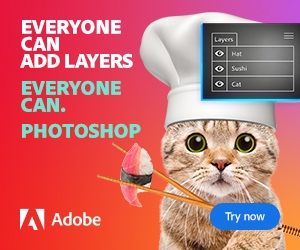Video editing is one of the most valuable skills in today’s content-driven world. With the rise of platforms like YouTube, Instagram, and TikTok, more people than ever are trying their hand at creating videos. Whether you’re crafting a vlog, a tutorial, or a short film, mastering video editing can elevate your content and make it more engaging for your audience.
If you’re new to video editing, the process may seem overwhelming at first. But fear not! In this article, we’ll break down the basics of video editing and offer tips on how to get started with creating stunning videos—no matter your skill level.
What Is Video Editing?
At its core, video editing is the process of selecting and arranging video footage to create a coherent and visually compelling final product. This process involves cutting, trimming, adding transitions, incorporating sound, and applying visual effects. Video editing allows you to shape raw footage into a polished piece of content, helping you tell a story, share information, or simply entertain your audience.
While editing can be complex, breaking it down into manageable steps makes the process far less intimidating. Let’s look at the essential elements of video editing that every beginner should know.
1. Choosing the Right Video Editing Software
Before you can begin editing, you need the right tools. Thankfully, there are many options available, whether you’re working on a budget or you’re ready to invest in professional software. Here are some popular options:
iMovie (Mac): iMovie is a beginner-friendly video editing tool for Mac users. It’s simple to use, yet powerful enough to create polished videos. You can cut clips, add transitions, and work with music tracks without needing any prior editing experience.
Windows Video Editor (PC): For Windows users, the built-in Video Editor tool offers basic features, such as cutting clips, adding music, and applying simple transitions. While not as advanced as other software, it’s a great starting point for beginners.
Adobe Premiere Pro (Mac & PC): If you’re looking to go beyond the basics, Adobe Premiere Pro is a professional-grade video editor used by many in the industry. It offers advanced features such as multi-camera editing, motion graphics, and extensive color correction tools.
DaVinci Resolve (Mac & PC): DaVinci Resolve is known for its powerful color grading tools and professional-grade editing capabilities. The free version is very robust, and it’s a great option for those who want to learn advanced editing techniques.
For beginners, iMovie and Windows Video Editor are fantastic starting points, while those looking to level up their editing skills may find Adobe Premiere Pro or DaVinci Resolve more suitable.
2. Understanding the Video Editing Process
The video editing process is typically broken down into several key stages. Here’s a quick overview of the workflow you can expect:
Importing Footage: Before you can begin editing, you need to import your raw footage into your video editing software. This may include video clips, audio files, and images.
Cutting and Trimming: The first step in editing is cutting out unnecessary parts of the footage and trimming clips to the desired length. This helps remove any excess content that doesn’t contribute to the story.
Arranging Clips: Once you’ve trimmed your footage, it’s time to arrange the clips in a logical sequence. This is where you begin to shape the narrative or flow of the video.
Adding Transitions: Transitions are the effects used to move between clips. Simple cuts, fades, or dissolves can help the video flow more smoothly and maintain viewer engagement.
Incorporating Sound: Sound is a crucial element of video editing. Add background music, sound effects, and dialogue to ensure the audio complements the visual content.
Color Correction and Grading: Color correction adjusts the colors in your video to ensure they look natural, while color grading is used to create a specific mood or atmosphere. This can help elevate the visual appeal of your video.
Exporting the Final Product: Once you’re happy with your video, it’s time to export it. Depending on the platform you’re sharing it on (YouTube, Instagram, etc.), you’ll need to export the video in the appropriate format and resolution.
These steps are just the basics of the video editing process. As you gain more experience, you’ll learn how to use advanced features like motion graphics, visual effects, and keyframing to enhance your content further.
3. Essential Video Editing Techniques for Beginners
Now that you know the basic editing workflow, let’s dive into some essential techniques that will help improve your video projects.
a. Cut on Action
Cutting on action is a technique that involves cutting between shots during a movement or action. This helps the video flow seamlessly and gives the viewer the sense that the action is continuous. For example, if someone is walking towards a door, you can cut from a wide shot to a close-up as they open the door, creating a smooth transition without jarring cuts.
b. Use of B-Roll
B-roll footage is supplementary footage that enhances the main action or narrative. For instance, if you’re filming a cooking tutorial, B-roll might include close-ups of the ingredients being chopped or the dish being plated. B-roll helps illustrate the story and adds visual variety, making your video more dynamic.
c. Pacing and Rhythm
The pacing of your video refers to how fast or slow the edits occur. Pacing affects how your audience perceives the story and can help evoke emotions. For example, fast-paced editing works well for action sequences or montages, while slower pacing can be used for more emotional or contemplative moments. Rhythm refers to the timing of your cuts and transitions, and matching the rhythm to the music or dialogue can greatly improve the flow of the video.
d. Text and Titles
Text can be a powerful tool to emphasize key points, add context, or introduce new segments. For instance, titles can be used to introduce a scene or character, while lower thirds (text that appears at the bottom of the screen) can introduce people or locations. Make sure to use fonts and text animations that match the overall tone of your video.
e. Audio Mixing
Great video editing isn’t just about the visuals; the sound is equally important. Proper audio mixing ensures that dialogue, sound effects, and music are balanced and clear. Make sure that background music doesn’t overpower dialogue and that sound effects are used strategically to enhance the action.
4. Exporting Your Video
Once your video is edited to your satisfaction, the final step is exporting. Make sure to choose the right format and resolution based on where you plan to upload or share your video. For example:
YouTube: Export in 1080p resolution (or 4K if you’re aiming for the highest quality) and use the H.264 codec for a good balance between file size and video quality.
Instagram: Instagram videos should be formatted in a square (1:1) or vertical (9:16) aspect ratio, with a resolution of 1080px by 1080px for square videos or 1080px by 1920px for vertical videos.
Choosing the right settings will ensure your video looks great on the platform you’re using.
5. Practice and Experimentation
The best way to become a proficient video editor is by practicing and experimenting with different styles and techniques. Start small by editing short videos or even social media content. As you grow more comfortable with the software and techniques, you can take on more complex projects like short films or documentaries.
Conclusion
Video editing is a powerful tool that allows you to turn raw footage into something special. Whether you’re a beginner or looking to enhance your skills, mastering the basics of video editing is the first step to creating engaging, professional-looking content. Remember, the key to success in video editing is practice and experimentation. Don’t be afraid to try new techniques, and soon enough, you’ll be able to create stunning videos that captivate and inspire your audience.



